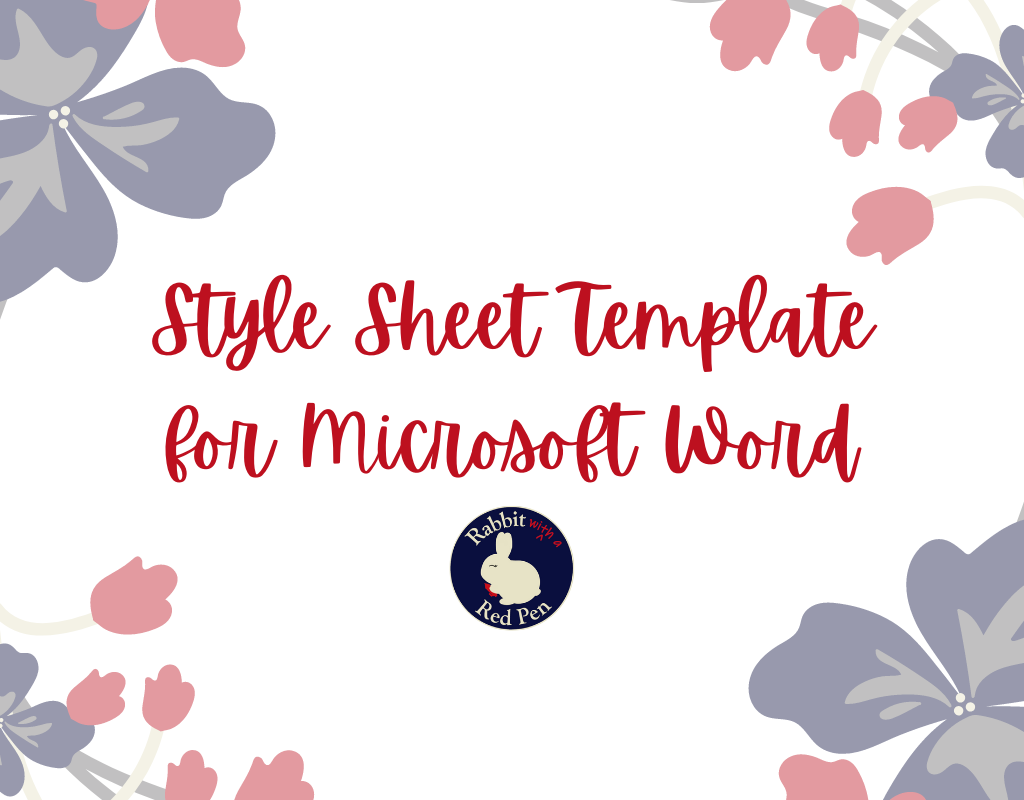Style Sheets: What They Are and How to Use Them
Every writer and editor has their own working process. When I first started editing, I would open a new Notepad file before I began working on a new manuscript. As I would progress through the edit, I made note of every character name and location I came across, as well as any significant details that were important about each one. For example, in a military story, I might write, “John Smith – corporal, brown hair.” It was nothing fancy, but it was helpful when I came across the character name again. If the writer referred to the character as Sergeant Smith with no mention of a promotion, I could assume that this was a mistake in rank. Later on, I learned that what I had been doing in Notepad was creating a rudimentary style sheet.
What’s a style sheet?
A style sheet is a useful tool for writers and editors alike. It essentially outlines the formatting, layout, spellings, and preferences for a specific manuscript. Examples of what can be listed in a style sheet include
whether or not Oxford (serial) commas will be used (the optional comma that comes before “and” or “or” in a series of items, such as in “apples, oranges, and bananas”)
spelling preferences and hyphenations
how thoughts are stylized
character names and descriptions
There is no right or wrong way to create a style sheet, and the information contained within one is up to the user. It can be done with pen and paper or electronically. If you’d like to see what one looks like, click on the graphic at the end of this post to access a free template in Microsoft Word, which you can customize to fit your needs. It has been adapted from the style sheet template generously offered by Louise Harnby.
What are the benefits of using a style sheet?
Writers have different methods of keeping track of information relevant to their manuscripts. Some meticulously sort every detail into a spreadsheet. Some jot down only the major plot points to keep them on track. And others may keep everything in their head. Whatever your method, it may be helpful to create a style sheet as a reference for yourself and for your editor. Here are some ways in which a style sheet can be beneficial.
It can keep you organized. Instead of having information scattered around on different bits of paper (or not at all), write it all in your style sheet as an easy way to look back on key plot points, spellings, or character names.
It helps maintain consistency. Was the main character’s cousin’s name spelled Elizabeth or Elisabeth earlier in the book? Should acronyms be punctuated with periods or not (U.S. or US)? It’s important to stay consistent because readers will pick up on errors, and it’s often difficult to remember everything you’ve already written. This is especially critical if you’re writing a series. Having a style sheet for every manuscript, or even the series as a whole, allows you to keep things uniform from one book to the next.
You can share it with your editor. It’s extremely helpful for an editor to receive a style sheet from an author. It reduces the number of questions I’ll have about why you chose to format something how you did or why you spelled a word a specific way. It also tells me immediately what to look out for if something is different from what’s recorded on the style sheet.
If I don’t receive a style sheet from a writer, I create one based on the manuscript and share it with them. Not only does this provide them with a valuable tool, it also explains why I made the changes I made. If I add a serial comma where it’s missing, I don’t have to explain why I did so if the style sheet says that serial commas are used.
Whether you use a style sheet is up to you. If you haven’t been using one, I encourage you to try it out!
Click to access a free style sheet template for Microsoft Word, which was adapted from one offered by Louise Harnby.

